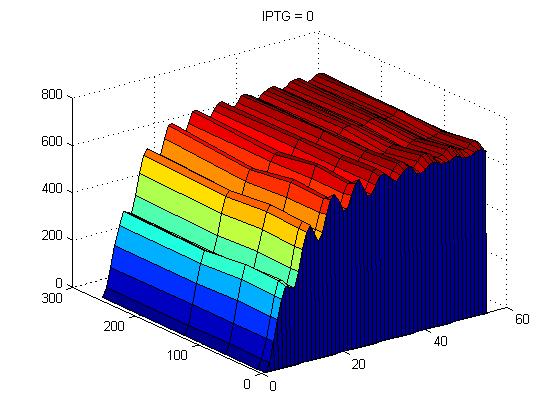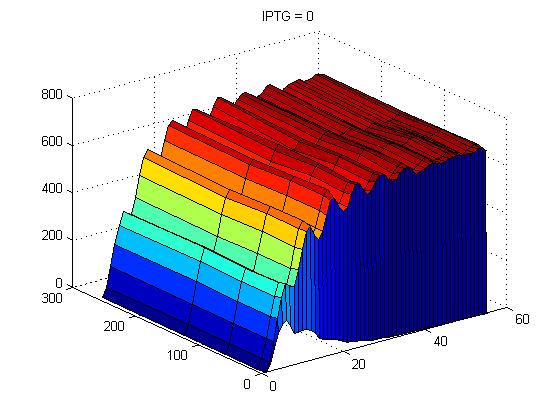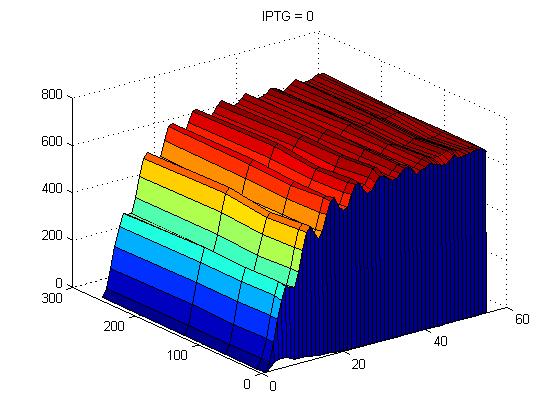Minnesota/16 June 2009
From 2009.igem.org
| Line 23: | Line 23: | ||
<center> | <center> | ||
<gallery widths = 300 heights = 200> | <gallery widths = 300 heights = 200> | ||
| - | Image: | + | Image: NC1000.jpg|Figure 4 - tetR2/tetO Reaction k Decreased to 1000 |
</gallery> | </gallery> | ||
</center> | </center> | ||
<br> | <br> | ||
By themselves these reactions do not affect the model significantly. | By themselves these reactions do not affect the model significantly. | ||
Latest revision as of 20:17, 29 July 2009
| Back to Notebook Home | |
| Go to Previous Day (June 15) | Go to Next Day (June 17) |
Patrick
Today I submitted and analyzed three more models to investigate how different kinetic factors changed the model. One model looked to see how increasing the kinetic constant of TetR2 production (reaction 44) by and order of magnitude would affect the model. The second looked at how decreasing the same constant by an order of magnitude changed the graph. Below are these two models along with the base model for comparison:
As can be seen there is a difference at low aTc concentrations. But this reaction is not the most important. The GFP concentration in experiments is more or less constant above 13 aTc molecules / cell, and any further increase in tetR2 intake will cause a more significant gradient at high aTc concentrations than desired. What I need to find is a reaction that will make GFP expression change significantly over time.
A third model created looked at whether reducing the kinetic constants for reactions 15, 17, 19, 25, 27, 29 (the same reactions as on June 15th) to a much small amount would have an effect. As can be seen, it did not:
By themselves these reactions do not affect the model significantly.
 "
"



